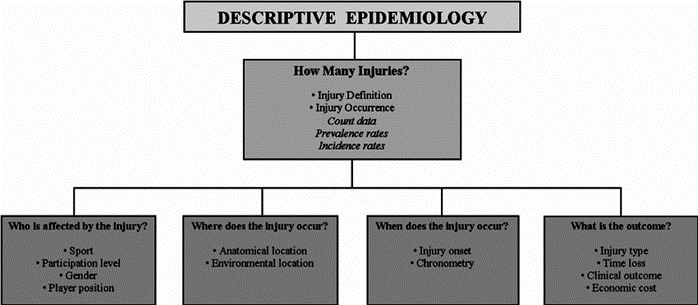A nurse is using analytic epidemiology when conducting a research project on a comparison group. Which of the following research projects is the nurse most likely completing?
Reviewing communicable disease statistics
Tracking locations where family violence is increasing
Describing population characteristics for healthy older citizens
Identifying factors contributing to childhood obesity
The Correct Answer is D
Choice A: Reviewing communicable disease statistics. This is incorrect because this is an example of descriptive epidemiology, not analytic epidemiology. Descriptive epidemiology describes the distribution and patterns of health events in populations, such as the frequency, location, and time of occurrence.
Choice B: Tracking locations where family violence is increasing. This is incorrect because this is also an example of descriptive epidemiology, not analytic epidemiology. Descriptive epidemiology tracks the trends and variations of health problems in different groups or areas.
Choice C: Describing population characteristics for healthy older citizens. This is incorrect because this is another example of descriptive epidemiology, not analytic epidemiology. Descriptive epidemiology provides information about the demographic and social factors that influence health outcomes.
Choice D: Identifying factors contributing to childhood obesity. This is correct because this is an example of analytic epidemiology. Analytic epidemiology investigates the causes and associations of health events in populations, such as the risk factors, exposures, or interventions that affect health outcomes. Analytic epidemiology often uses comparison groups to test hypotheses and draw conclusions.

Nursing Test Bank
Naxlex Comprehensive Predictor Exams
Related Questions
Correct Answer is B
Explanation
Choice A: Limit fluid intake to prevent incontinence. This is incorrect because limiting fluid intake can lead to dehydration, urinary tract infections, and kidney stones. Fluid intake should be adequate to maintain hydration and flush out bacteria from the urinary tract.
Choice B: Provide regular perineal care to prevent skin breakdown. This is correct because reflex incontinence can cause urine leakage and skin irritation, which can increase the risk of infection and pressure ulcers. Regular perineal care can help keep the skin clean and dry, and prevent complications.
Choice C: Administer hypotonic IV fluids. This is incorrect because hypotonic IV fluids can cause fluid overload, hyponatremia, and cerebral edema. Hypotonic IV fluids are not indicated for clients with reflex incontinence.
Choice D: Teach Kegel exercises to strengthen the pelvic floor. This is incorrect because Kegel exercises are effective for clients with stress or urge incontinence, but not for clients with reflex incontinence. Reflex incontinence is caused by a loss of voluntary control over the bladder due to a spinal cord injury, and Kegel exercises cannot restore this function.
Correct Answer is C
Explanation
Choice A reason: Completing a survey of the various ethnicities represented in the nurse's community is a good way to learn about diversity, but it is not the first step in developing cultural competence. The nurse should first examine their own cultural background and biases, and how they affect their interactions with clients.
Choice B reason: Studying the beliefs and traditions of persons living in other cultures is a valuable way to gain knowledge and understanding, but it is not the first step in developing cultural competence. The nurse should first be aware of their own cultural values and assumptions, and how they influence their perceptions and judgments.
Choice C reason: Considering how the nurse's own personal beliefs and decisions are reflective of their culture is the first step in developing cultural competence. The nurse should recognize that culture is not only about ethnicity, but also about age, gender, religion, education, socioeconomic status, and other factors. The nurse should also acknowledge that culture is dynamic and complex and that each person has a unique cultural identity.
Choice D reason: Inviting a family from another culture to join the nurse for an event is a nice way to show respect and interest, but it is not the first step in developing cultural competence. The nurse should first develop self-awareness and sensitivity, and avoid making stereotypes or generalizations about other cultures.
Whether you are a student looking to ace your exams or a practicing nurse seeking to enhance your expertise , our nursing education contents will empower you with the confidence and competence to make a difference in the lives of patients and become a respected leader in the healthcare field.
Visit Naxlex, invest in your future and unlock endless possibilities with our unparalleled nursing education contents today
Report Wrong Answer on the Current Question
Do you disagree with the answer? If yes, what is your expected answer? Explain.
Kindly be descriptive with the issue you are facing.
